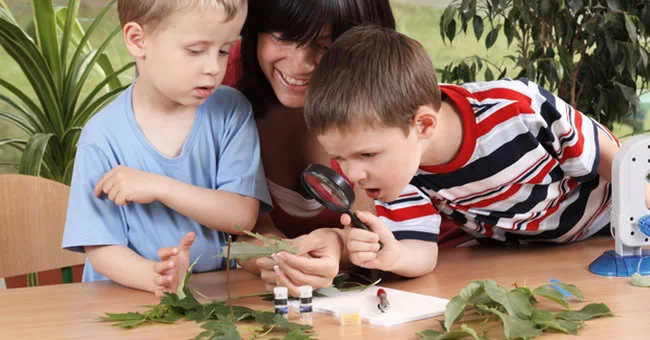The impact of STEM (Science, Technology, Engineering, and Mathematics) education deserves even more attention due to its growing importance in our quickly changing world. STEM creates a way for kids to build the skills required to solve problems and think creatively, which can lead to success in life. Day care centres are the keystone for starting your toddlers on these vital subjects, providing a stepping stone to potentially lifelong learning. In this post, we explore how child care centres embed these opportunities into their day-to-day routines, building future innovators.
Cultivating an Engaging Environment
Day cares and nurseries work hard to create a sense of curiosity and enjoyment in the learning process. South Melbourne child care centres often feature educational materials and interactive displays, allowing children to discover STEM concepts organically. Cheerful puzzles, interactive science kits, and rudimentary engineering devices rest invitingly, enticing the hands to assemble or explore. They learn basic science and maths through play without realising they are learning in the process.
Engaging Activities and Play
Playing is still one of the primary methods in which children learn, and child care centres across the globe capitalise on that by incorporating STEM into their daily routines. Building blocks, water play, and sandboxes teach engineering, physics, and math. When children build towers or dig tunnels, they discover balance, gravity, and spatial relationships. Furthermore, observation of the impact of guided experiments with water and sand allows the developing minds to understand cause and effect.
Incorporating Technology
Blending technology with preschool and kinder education might be hard, but child care centres have mastered this balance. Digital tools and applications suitable for different ages provide kids with an easy and enjoyable introduction to technology concepts. Educational games on interactive tablets can ignite interest in coding, problem-solving, and logical reasoning. These centres introduce children to technology from the very beginning, which is a step forward for them to be digitally literate in the future.
Outdoor Exploration
STEM is another subject that can be taught better in nature, and child care centres utilise outdoor spaces for better learning experiences. As children explore the outdoors, they can witness such natural phenomena as tides, wind, and growth, which can promote an early interest in science and nature. Planting seeds, getting to know insects, and observing the weather spark a sense of wonder and curiosity. These experiences nurture a questioning, answer-seeking child who is aware of the natural world.
Collaborative Learning
In most child care centres, children work together on projects and experiments, learning to share space and materials and communicate with each other. Such group work fosters team spirit, effective communication, and problem-solving skills, which form an integral part of STEM education. Building a bridge from blocks or doing a simple science experiment together guides children to share ideas and learn from each other. These experiences also provide the basis for future collaboration in academic and professional contexts.
Emphasising Critical Thinking
Critical reasoning capabilities are one of the most important pillars of STEM teaching, and activities offered by child care centres set kids on the path to step back, analyse, and think critically. Games such as puzzles, pattern recognition and logic practice promote divergent ways of thinking with our children. When children explore these things, they learn how to process different information, predict, and conclude, which benefits them throughout their education.
Nurturing Creativity
While STEM is often associated with logic and analysis, child care centres are where children can express themselves. Children can explore ideas and concepts nonliterally through art projects, imaginative play, and storytelling sessions. These outlets allow the young to associate with completely unrelated things, thereby developing an innovative approach to life. This will enable children to establish a balanced problem-solving process by developing technical know-how and creativity through various methods of education and development.
A New Generation to Build Upon
By incorporating meaningful STEM concepts into their programming, child care centres establish a basis for childhood learning that can be built upon throughout their elementary years. These centres prepare children academically by getting them acquainted with scientific principles, technological tools, engineering challenges, and mathematical reasoning. STEM disciplines encourage curiosity and creativity, which are great assets at such an early stage of development.
Conclusion
Child care centres can be one of the biggest enablers of early STEM learning, equipping children with the tools to navigate our thrill ride of a new world. These centres cultivate the environment of exploration, collaboration, and creativity necessary to create the future generation of thinkers, innovators, and leaders. Since STEM education is on the rise, so is the role of child care centres in young minds and laying the path for lifelong learning.

